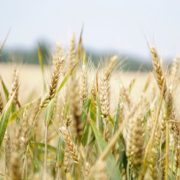“Wattle You” Do With a Course on Acacia Plants?
Acacia plants are commonly called “wattles” and they are the largest vascular plants in Australia. A course on acacia plants, like our Growing Acacia Plants is ideal for gardeners and horticulturalists.
You will learn to identify, grow and use a wide variety of wattles, and study propagation methods, the physiology of acacias, how to select them for specific climates and the landscaping and design processes. You will also gain insights into their other uses, including for tanning, timber, food sources, cut flowers and gum Arabic and how to deal with diseases and pests.
Learning Outcomes
Outcomes achieved by undertaking a course on acacia plants include:
- Learning about plant taxonomy and classification
- Exploring resources and reference books
- Gaining an understanding of organisations, periodicals (magazines and journals) and the internet
- Appreciating acacia ecosystems
- Studying a list of significant acacias
- Examining the physiology of acacias
- Understanding flower structure, an inflorescence and terminology
- Attaining knowledge of the physiology of acacia
- Gaining insights into foliage, flowers, acacia fruits (seed pods) and acacia bark
- Learning about environmental factors, where the plant grows naturally and light and temperature conditions
- Exploring nutrition and pests and diseases
- Gaining an understanding of soil chemistry, soil profile, why soil is the key to good health and how to improve soil structure
- Studying nutrient elements and major and minor elements
- Examining acacia deficiencies and toxicities, soil testing and how to improve different types of soils problems
- Understanding weeds and their control and the methods of weed control
- Attaining knowledge of propagation, growing from seed, seed collection and the germination of seed
- Gaining insights into seed, boil water, hot water and chemical treatments
- Learning about scarification
- Exploring sowing and seed storage
- Gaining an understanding of cuttings and how to improve success with cuttings
- Studying transplanting seedlings or rooted cuttings and potting up
- Examining plant selection and the uses of acacias
- Understanding plants for different situations and the planning and design process
- Attaining knowledge of garden accents and how to create landscape effects
- Gaining insights into the recommended acacias for different situations
- Learning about hardy, cold-tolerant and drought-tolerant plants
- Exploring low growing wattles for warm humid places
- Gaining an understanding of tall shrubs for warm, humid places
- Studying summer flowering acacias and autumn flowering acacias
- Examining Australian acacias beyond Australia
- Understanding the other uses for acacias
- Attaining knowledge of timber and tanning
- Gaining insights into cut flowers and the post-harvest of flowers
- Learning about perfume and acacias for food
- Exploring how seeds are eaten and how to make wattle seed essence
- Gaining an understanding of using acacias for fodder
- Studying gum arabic
- Examining pests and diseases, problems detected on specific acacias and galls, beetles, weevils, mildew and cinnamon fungus (phytopthora sp.)
- Understanding common environmental problems
- Attaining knowledge of the burn of foliage
- Gaining insights into drainage problems
- Learning about laws in relation to chemical use
- Exploring frost, hail, shade, cold weather, extreme heat and wind treatments
And more!
10 Fascinating Facts About Wattles
Acacia plants, including the golden wattle, have thrived on our continent for 35 million years and are resilient to wind, drought and bushfire. So they are the perfect symbol for our Aussie spirit! Here are ten facts you might not know about Australia’s floral emblem.
#1 – Acacia wood is made into furniture
Wattles are vital components of Australia’s many and varied ecosystems . They provide shelter, shade and fodder and are used for erosion control, roadside and ornamental plantings, mining rehabilitation and other revegetation programs. Timber from wattles is also used for high quality furniture, including the species known as Blackwood (Acacia melanoxylon).
#2 – Indigenous Australians have used acacia for millennia
Australia’s First Peoples have inhabited the continent for over 65,000 years. They used acacia plants for a number of purposes before British colonisation. The pollen, wood and sap from wattle trees was transformed into medicine, food, tools, weapons, glues, perfumes, musical instruments, dyes and ceremonial decoration. Because they bloom in spring, they also signified seasonal events such as eels appearing in rivers and whales arriving on the coast.
#3 – The scent of a wattle can improve your mood
A fragrant and beautiful essential oil can be distilled from the flowers of certain species of the wattle. It has a wonderful, sweet floral, rich woody and honey aroma. Relaxing, uplifting and calming, it also improves moods and can calm noisy children (bonus!)
#4 – The acacia is connected to Australia’s military history
Australia was federated as a nation in 1901, so World War I efforts were integral to the formation of a national identity. The golden wattle played a significant symbolic role as its flowers were sold to raise money during the war. It also became tradition to send pressed wattles in letters to wounded soldiers in Europe, and fallen soldiers were often buried with a sprig of wattle.
#5 – There is a national Wattle Day
The golden wattle only became the official floral emblem of Australia in 1988. But Wattle Day has been observed singe 1899, before our nation was even federated. Wattle Day is celebrated on September 1 every year, and, as it’s the first day of spring, it reinforces the flower’s status as a symbol of renewal, new growth and fresh beginnings.
#6 – The wattle image is incorrect on the Coat of Arms
A sprig of wattle has appeared on the official symbol of the Commonwealth of Australia — the Coat of Arms — since 1912. However, it’s actually botanically incorrect! Wattle frames the emu, kangaroo and the shield which represents the country’s six states. But technically, the green leaves and spherical flowers of a wattle don’t provide an accurate depiction of the Acacia pycnantha.
#7- Golden wattle inspired Australia’s national colours
Our national flag may be red, white and blue, but Australian sporting teams have been wearing the national colours — the “green and gold” — on their uniforms since the late 1800s. The first Australian national sporting team that wore these colours was the Australian cricket team that toured England in 1899. Green and gold were officially recognised as Australia’s national colours in 1984.
#8 – It appeared on the Queen’s coronation gown
Australia’s elite sportsmen aren’t the only ones who love a touch of green and gold. Queen Elizabeth II wore golden wattle on her official coronation gown when she took the throne on June 2, 1953. It appeared alongside other floral emblems that represented different corners of the British Empire. These included New Zealand’s fern, Canada’s maple leaf, South Africa’s protea and India’s lotus flower.
#9 – Golden wattle is used on Australia’s awards and medals
The designs of countless Australian Defence Force honours, the National Emergency Medal and the highest honour an Australian civilian can receive, the Order of Australia medal, are based on the golden wattle. The national flower is also a common motif in works by iconic Australian artists such as Sidney Nolan and Albert Namatjira, as well as John Williamson’s song Cootamundra Wattle and Banjo Paterson’s 1915 poem, We’re All Australians Now.
#10 – It is a weed in some parts of the world
Australians might hold their national flower with great affection, but that sentiment isn’t necessarily shared all over the planet. The Acacia pycnantha is considered a weed in Tanzania, South Africa, Portugal, Italy, India, Sardinia, New Zealand and Indonesia where it competes with native vegetation.
Popular Wattles For Your Garden
A course on acacia plants will help you identify plants that are best for your garden. Wattles can be amazing plants for your garden and can range in height from two to thirty metres. But regardless of their height, they all produce flowers in vibrant hues of yellow. Here are some of the more common varieties in order of size.
- Rough Wattle – Acacia aspera
- Drummond’s Wattle – Acacia drummondii
- Graceful Wattle – Acacia gracilifolia
- Gold-dust Wattle – Acacia acinacea
- Acacia argyraea
- Rosse’s Wattle – Acacia rossei
- Wyalong Wattle – Acacia cardiophylla
- Box-leaved Wattle – Acacia buxifolia
- Winter Wattle/Gawler Ranges Wattle – Acacia iteaphylla
- Mudgee Wattle/Glory Wattle – Acacia spectabilis
- Hairy Wattle – Acacia vestita
- Witchetty Bush – Acacia kempeana
- Zig-zag Wattle – Acacia macradenia
- Wallangarra Wattle/Cascade Wattle – Acacia adunca
- Elephant Ear Wattle – Acacia dunnii
- Queensland Silver Wattle/Mount Morgan Wattle – Acacia podalyriifolia
- Acacia conspersa
- Common Mulga – Acacia aneura
- Gossamer Wattle – Acacia floribunda
- Silky Wattle – Acacia holosericea
- Western Myall – Acacia papyrocarpa
- Ovens Wattle – Acacia pravissima
- Golden Wattle – Acacia pycnantha
- Sticky Wattle – Acacia howittii
Gain a solid foundational knowledge of how to select, grow and use a variety of acacias with a course on acacia plants, like our Growing Acacia Plants course.










